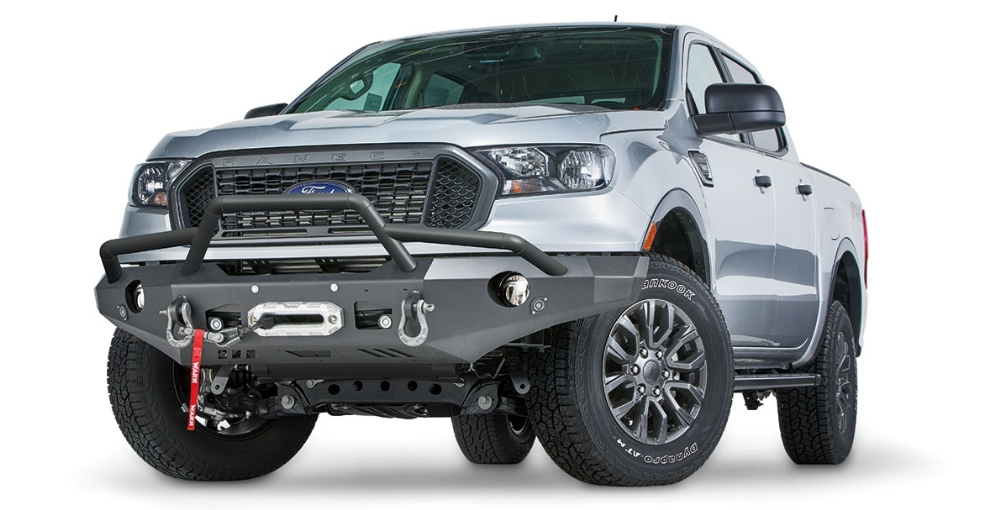
(Also check out Warn’s Winch Guide)
Winch sizes
The first and foremost factor to consider is the winch capacity. When it comes to a winch, higher winch capacity is always better! The heavier the vehicle, the more powerful winch you’ll need. Your winch should be able to pull at least 1.5 times the weight of your vehicle.
You can calculate it by taking the gross vehicle weight and multiply it by 1.5. This is the minimum rating, but certain factors can make your winch capacity be exceeded.
GVWR = Base Weight + Passengers / Cargo
Best winch Size >= GVWR x 1.5
So, if your vehicle weighs 1.8 metric tons (4000 lbs) then choose a winch having at least 2.7 metric tons (6000 lbs) capacity.
The 1.5X rule is the industry standard. But for a better safety, you should pick one that has the capacity more than that.
On a 1983-2011 Ford Ranger, we recommend you use at least an 8,000 lb winch. On the 2019 and newer Ford Ranger, we would recommend a 9,500 lb or larger winch.
Winch types
The main difference between a hydraulic and an electric winch is the power source. Hydraulic winches are powered by the vehicle power steering pump. Electric winches are linked to the vehicle battery and electrical system.
The electric winch is the most common and widely used winch type. They’re quite durable and often less expensive than the hydraulic winch – but if you use them for a longer time, they can overheat. So, if you have to use the winch all day long, then you may face the problem with your vehicle’s electrical system. In this case choose a hydraulic one, otherwise, electric winches are a better option.
If you plan to use a winch frequently, then the hydraulic winches are the best choice. They don’t have problems of overheating, but they have some downsides too. This type of winch isn’t available everywhere – only a few manufacturers produce hydraulic winches. While using this winch, the engine must be running because they’re operated with the power steering pump.
Rope options
There are lots of debate when it comes to choosing between synthetic rope or steel cable.
Steel Rope: This type of rope is affordable, durable and very easy to maintain. But one downside is it might be too heavy for your rig’s front. They’re ideal to use in highly abrasive terrains. If you often drive through sand, mud and rocks, then steel rope is the good choice for you. While handling the rope, you should wear heavy gloves to protect your hands. Because steel cable can accidentally cut your hand.
Synthetic Rope: This is safer, flexible, lighter and easier to handle than the steel cable. You don’t need a glove to handle them. They’re great for trail and recovery winches. But their negative side is that they’re very susceptible to Chemicals, UV exposure, heat and abrasion. Synthetic rope also requires proper care and maintenance. You have to wash them from time to time after using it in sand or muddy conditions.
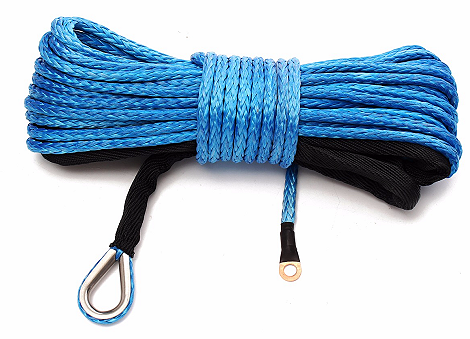
(Synthetic Winch Rope)
Winch Motor Type Explained
Winches come with two types of DC motors: Permanent Magnet Motors(PM) and Series Wound Motors(WM).
All DC winch motors have a set of coils inside them which is called the armature. Inside this armature, there is either another set of field coils or a set of permanent magnets which is called stator.
The stator creates a magnetic field which causes the armature (or rotor) to rotate when an electric current flows through it.
The higher the horsepower rating, the more power and torque the motor will have. The motor’s horsepower has a direct effect on both pulling power and line speed.
Permanent Magnet Motors
The stator of permanent motor uses permanent magnets and there are no field coils. They cause very little strain on the battery than series-wound motors and typically cost less. They offer good pulling power and performance.
Permanent magnet motors are better suited for light to medium duty winching jobs. As permanent magnet motors are less tolerant to heats, winching time and load should be taken carefully. This type of motor can lose power in extremely cold conditions.
Series Wound Motors
When it comes to the series wound motor, the field coils are connected in series with armature coil. They are very powerful and generate the most torque for a given current. SW motor uses more current over a PM motor because they use field coils to generate the magnetic field.
Series wound winches are heavier duty winches which will help you to overcome the most difficult recovery situations. They usually cost more and sometimes require upgrading the alternator, battery or other components for reliable performance. The series-wound is a better option for cold weather or heavy-duty use.
Winch Gear Types Explained
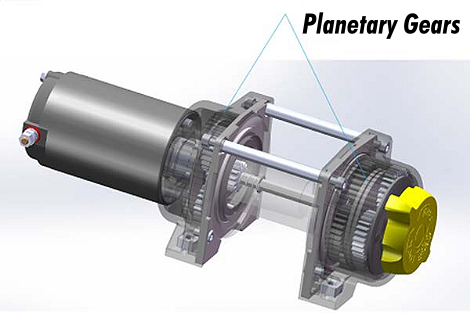
Winches mainly come in three different types of gear systems. They are: Planetary gears, Worm gears, Spun gears.
Planetary Gear
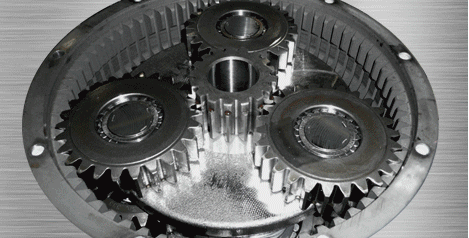
(Planetary Gear)
Planetary gears are the most common and most popular for automatic transmissions. They are named planetary gear because they look like the sun with some revolving planets. It’s actually a gear set inside or on a large gear.
Nowadays most electric winches use the planetary gear. They are typically more compact which allows for less cost and weight. They offer strength and smooth operation with good resistance to torque loads. The planetary gear systems have a power transfer efficiency of 65%.
One of the negative points of planetary gear is heat accumulation on the brake unit.
Worm Gear
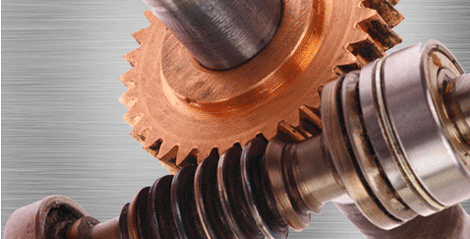
(Worm Gear)
Winches with worm gear are ideally suited for workman or industrial applications. They’re not generally used on off-road winches. Their special features are lowering and load holding. That’s why they’re a popular choice for tow trucks.
The worm gear has a power transfer efficiency of 35 to 40%. They provide very high reliability, reduction, and built-in braking mechanism. They’re simpler and stronger than other gear systems.
Their downside is that they pull far slower than electric winches.
Spun Gear
Spun gear has a power efficiency of 75 percent. They consist of one small wheel-shaped gears and one large wheel-shaped gears. The smaller gear connected to the motor and makes the larger one to run. They’re not expensive but still perform well.
Spun gear winches have fairly low amperage draw. But they are fast. Only the legendary WARN M8274, which is one of the top winch manufacturers, has a spun gear still on the market.
Mount options
This is one of the most important considerations. There are three popular options that you can mount your winch.
Bumper mount: This is the simplest option mounting option. They offer the most versatility. They’re super easy to install.
Multi-mount: This is a little more complex than the first one. A Multi-Mounted winch is not very durable because of the mounting point. The multi-mounted winch is perfect for you if you’re one of them who want the security a winch provides without mounting it to your vehicle permanently.
Winch bumper: This mounting options becoming popular day by day as they look like really part of your vehicle. They also provide protection to your vehicles front side.
Links:
